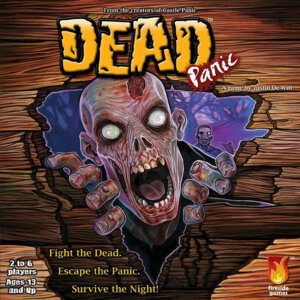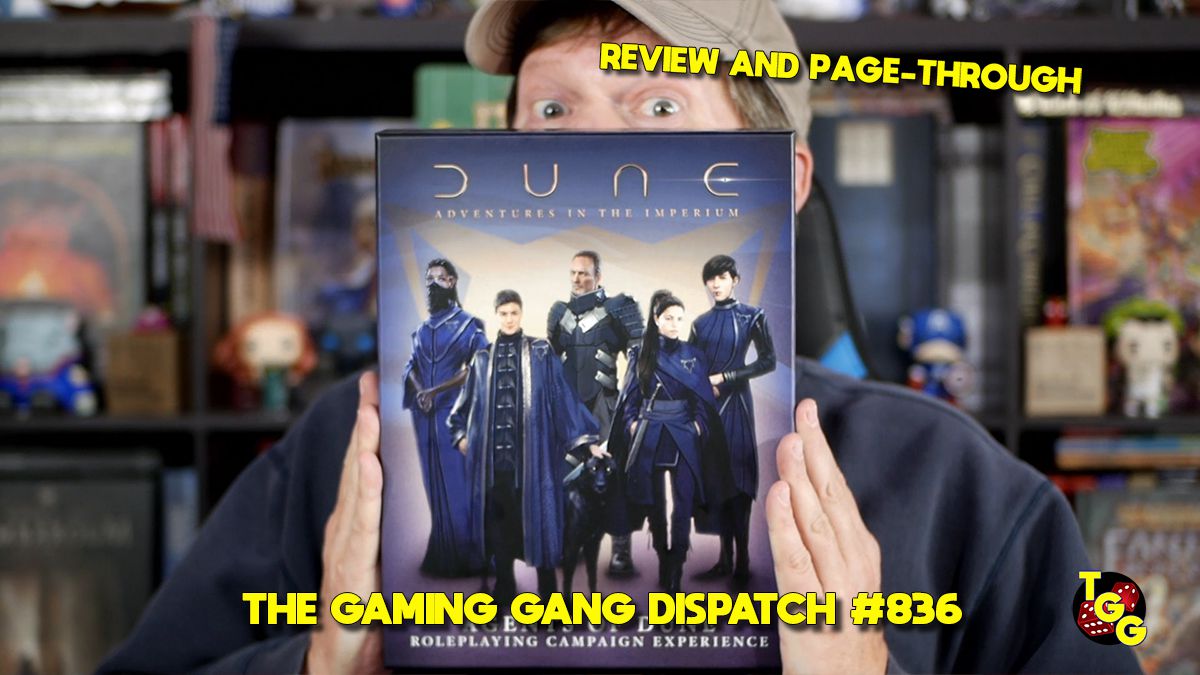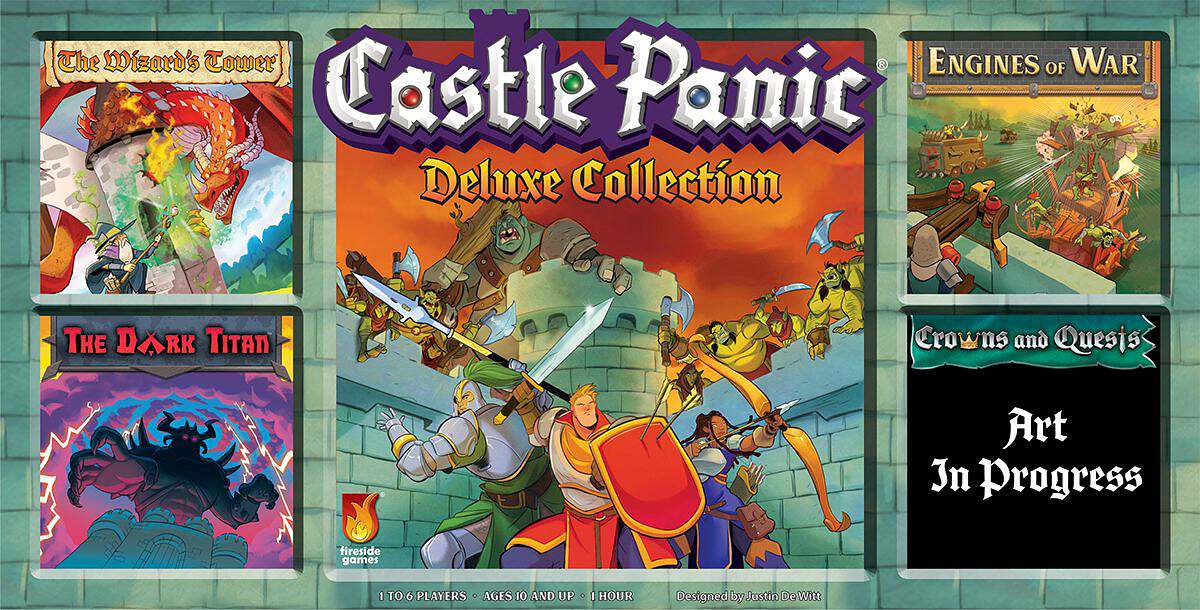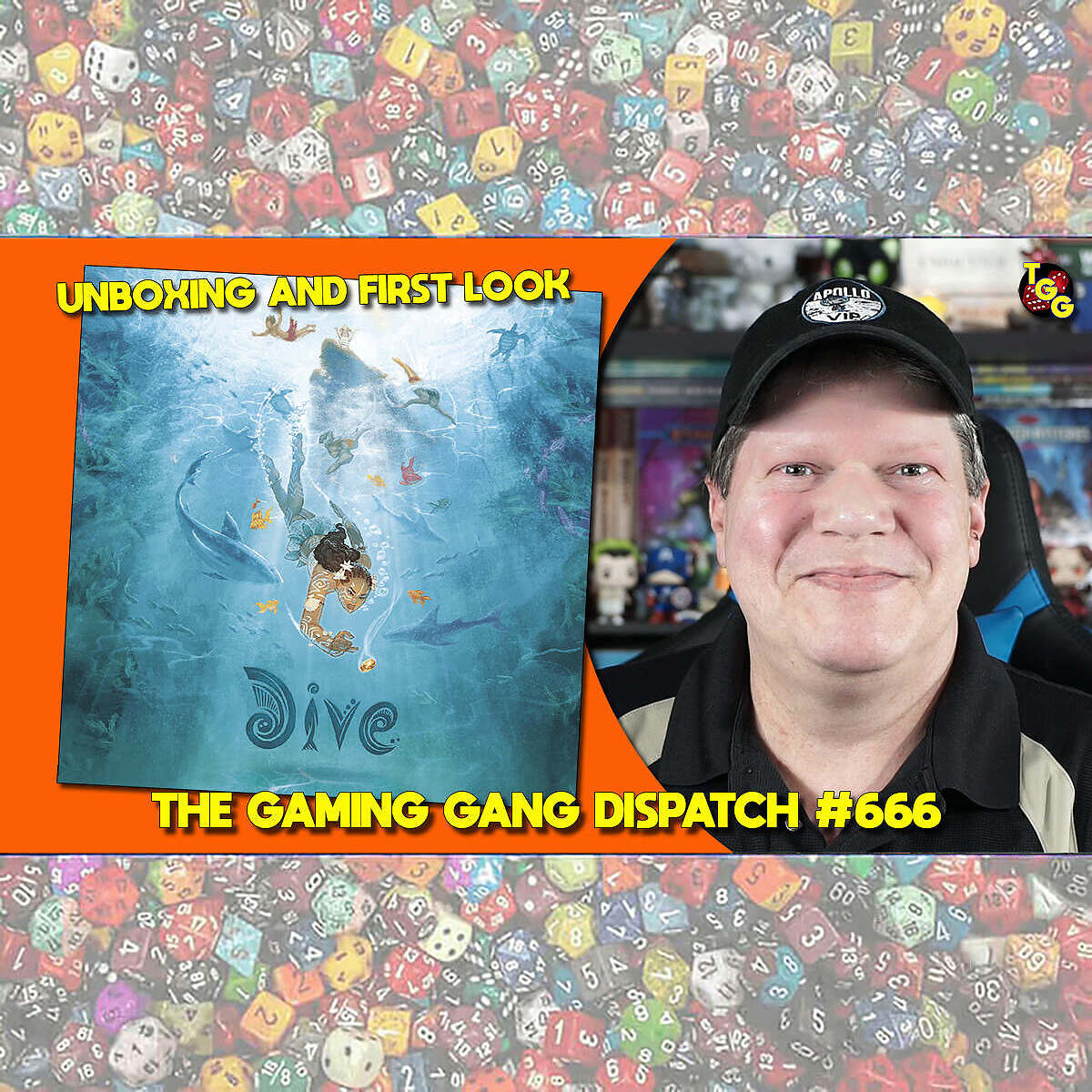Publisher: Fireside Games
Designer: Justin De Witt
Artist: Víctor Pérez Corbella
Year: 2013
Genre: Lighter co-op zombie tower defense game
Players: Two to six players
Ages: 13+
Playing Time: An hour to an hour and a half
MSRP: $39.95
Fireside Games has quickly made a nice name for themselves with titles like Castle Panic, Bloodsuckers, Bears and such. Their most recent title Dead Panic – set during a zombie apocalypse – will likely strike some as little more than a retheming of Castle Panic as a money grab to cash in on the ever increasing genre of zombie games. I’m happy to say after getting a few plays in I can certainly attest Dead Panic may share some mechanics with Castle Panic but the title stands on its own as opposed to simply being more of the same. Having said this doesn’t necessarily mean Dead Panic is a better game than previous Panic releases though.
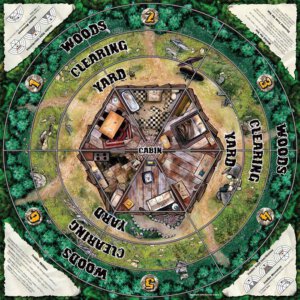
Some may be surprised by Dead Panic’s rules as they don’t seem as concise as we’ve seen previously from Fireside and you’ll end up wanting to keep the rules handy during your first handful of games – especially when figuring out exactly how the zombies choose where to move – and the rules aren’t as intuitively presented as in Castle Panic. The rest of the components are nice and the art is pretty good too, if maybe a little too gruesome for very young players.
Each player is represented by a character card which provides a bit of background, the number of wounds the character can take before they bite the dust, and any special ability they possess. The players are tasked with tackling the oncoming zombies, by defending a cabin, as they also attempt to retrieve three pieces of a radio (each piece is carried by a Survivor who may arrive on the board if drawn from the zombie bag) which they’ll assemble in order to contact a rescue van which will then whisk them to safety. I found the choice of making players find three pieces of a radio to be a very odd design decision since it really doesn’t make a whole lot of sense; I get it that the designers didn’t want players to only have to find one survivor who may have the radio but having the radio broken into three parts is just goofy and a rescue van strikes me as pretty strange as well. A rescue helicopter? Yes. A van which shows up immediately after the radio is used to call in help? Weird.
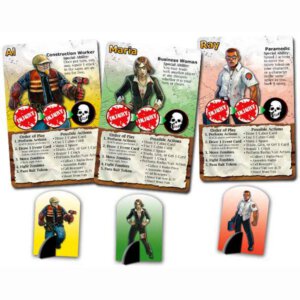
Players take their actions – Beginning with the player who holds the Bait Token each player will, in turn, perform their two actions. Actions can include searching the cabin by drawing a Cabin Card which represents something useful which has been found. These items consist of guns, melee weapons, helpful or healing items, and even an elephant gun. I have to say this cabin must have belonged to the most paranoid, militia type because it’s really chock full of weapons. Players can also use a Cabin Card and take advantage of whatever benefit the card contains – healing wounds as an example. You can also choose to move a space on the board, which is pretty self-explanatory.
Players also have the ability to fire a ranged weapon at any zombies within the map band the weapon can reach. The player taking a shot will roll two dice to see if they hit and, if they do, apply the weapon’s damage to their target or targets. Guns do have a set number of shots and these cards will be rotated until they’re out of ammo then be used as clubs in melee combat.
Players can also spend an action to trade cards or radio pieces with another player, repair a crack in a cabin wall, build the radio, use the radio to call for rescue, or move the rescue van a space once it arrives.
Draw an Event Card – The event card will show how many new zombies are drawn from the Zombie Bag. How many zombies appear might be based on a die roll, the current number of players, or a set number on the card. The Event Card may also indicate something out of the ordinary such as a specific zombie type getting additional movement or more zombies showing up if guns have been fired. The zombies are broken down into Creepers, Shabblers, Brutes, Sprinters, or Brawlers. Keep in mind the Survivors also lurk in the Zombie Bag so you might draw one of the coveted owners of a radio piece too. Zombies and Survivors are placed in to outermost range ring (The Woods) and their exact location is determined by rolling a die for each.
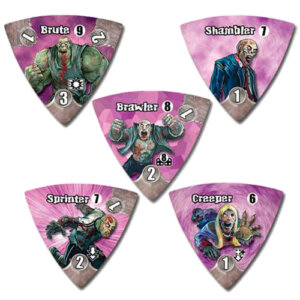
Zombies also attempt to tear the walls of the cabin down in order to get inside. Creepers can move right through walls though (not sure why honestly) and Brutes can take walls down easily. If a zombie has a movement point they can put a crack in the wall and two cracks take the wall down. Brutes take a wall down on one hit.
Fighting Zombies – If characters find themselves in the same space as a zombie, or zombies, then it’s on to melee combat. The characters get to attack each zombie in the space no matter how many zombies there may be. Firearms automatically hit, without requiring an action or die roll either, and simply run out of ammo. Melee weapons can be used against the zombies and two dice are rolled and compared to the zombie’s Fight number. If the player beats the number then the zombie receives as many wounds as the weapon dishes out. Nothing happens on ties unless the character is fighting a Brawler who defeats a player on all ties. If the player loses then the character receives a wound unless they drop the melee weapon they were using. If a character takes enough wounds to kill them they’ll become a zombie. Survivors also fight zombies in their space but the Survivors normally end up as a meal for the undead when that happens.
Pass the Bait Token and Begin the Next Turn – The first player possesses the Bait Token which also has the detrimental effect of drawing zombies to that player in the case of one or more characters being equally distant during zombie movement.
Once the characters and any Survivors have gotten inside the van (using an action to do so) the game ends in victory.
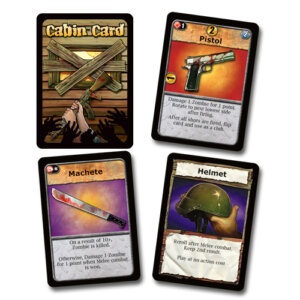
I find myself torn on Dead Panic; on one hand it’s one of the few zombie themed games you could break out with younger players and not have to worry about it being too gruesome while, on the other hand, I don’t think there’s enough real meat to keep older and more experienced gamers coming back for more. Granted, Dead Panic is fun but it’s not exceptionally entertaining or overly deserving of coming off the shelf very often as there are much more exciting zombie games out there on the market. Add to this the fact the zombie movement rules are a lot more complex than what one would expect from what is in essence a light co-op game and it leads me to consider Dead Panic a decent game but not a great one.
Plus, fans of Castle Panic aren’t guaranteed to dig Dead Panic either. At first glance Dead Panic looks a whole lot like Castle Panic but plays in a completely different way. I’ll even go out on a limb and say Castle Panic might be a bit more difficult than Dead Panic. For anyone out there who thinks defending the castle from swarms of monsters is too easy already, you’ve been warned.
If you’re in the mood for a lighter take on the zombie apocalypse, especially if you have eleven and twelve year olds who are mature enough for the subject matter, then your friends and family should have a good time with Dead Panic. Even fans of lighter fare should give Dead Panic a look as it isn’t insanely complex, even with the strange zombie movement rules. If you consider yourself a veteran gamer and play with others of the same ilk, then you may find Dead Panic a little too breezy and easy for your tastes.
[rwp-review id=”0″]


